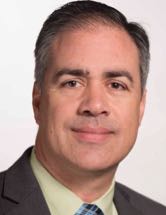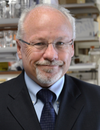07:30 | Morning Coffee, Breakfast Pastries, and Networking |
|
Session Title: Extracellular Vesicle (EV)-based Therapeutics |
| |
08:30 | Evaluation of a Hybrid Exosome/Virus Vector System for Gene Transfer and Therapy in Preclinical Models of Human Disease
Casey Maguire, Assistant Professor of Neurology, Harvard Medical School, United States of America
Adeno-associated virus (AAV) vectors have shown remarkable efficiency in a number of preclinical models of disease in several organs including the eye, brain, muscle, heart, and liver. A major limitation to long term transduction, especially via the systemic route, is pre-existing immunity (humoral and cell-mediated) as well as the high vector load required to achieve sufficient levels of gene expression in the desired organ. Natural nanoparticles released from all cells, called exosomes, may have utility in creating better AAV vectors for human gene therapy. We have previously shown that harvesting AAV vectors from the media of 293T producer cells contains AAV vectors associated with exosomes (called exo-AAV). We have gone on to demonstrate that 293T-derived exo-AAV can evade neutralizing anti-AAV antibodies and greatly increase transduction in mice. Here we will report on our findings of the gene transfer capabilities of exo-AAV to several organs of interest in human disease including the brain, liver, muscle, eye, and cochlea. |
09:00 | Exosomes as Therapeutic RNAs Delivery Vesicles
Anastasia Khvorova, Professor, RNA Therapeutics Institute, University of Massachusetts Medical School, United States of America
Applications of RNA interference for neuroscience research have been limited by a lack of simple and efficient methods to deliver oligonucleotides to primary neurons in culture and to the brain. Here, we show that primary neurons rapidly internalize hydrophobic siRNAs (hsiRNAs) added directly to the culture medium without lipid formulation. We identify functional hsiRNAs targeting the mRNA of huntingtin, the mutation of which is responsible for Huntington’s disease, and show that direct uptake in neurons induces potent and specific silencing in vitro. Moreover, a single injection of unformulated hsiRNA into mouse brain silences Htt mRNA with minimal neuronal toxicity. Thus hsiRNAs embody a class of therapeutic oligonucleotides that enable simple and straightforward functional studies of genes involved in neuronal biology and neurodegenerative disorders in a native biological context. |
09:30 | Non-coding RNAs as Circulating Markers and Exosomal Therapeutic Targets in Neurological Disorders
Chaya Brodie, Professor, Henry Ford Hospital, United States of America
|
10:00 |  | Keynote Presentation Extracellular Vesicles as Biologic Modifiers
Peter Quesenberry, Professor of Medicine, The Warren Alpert Medical School of Brown University, United States of America
Extracellular vesicles are produced by essentially all tissues. Their nature is predicated by the nature of the originator cells, the treatment of the originator cells, the nature of the target cells and the type of initial vesicle separation. Vesicles have been shown to have deleterious or beneficial effects in different settings. If the vesicles derive from damaged or diseased tissue the effects are generally to make the situation worse, this is seen in cancer and pulmonary hypertension models. However, if the vesicles derive from normal tissues or mesenchymal stem cells healing effects are generally seen. Based on a number of studies it would appear that initial biologic effects of vesicles are due to transfer of mRNA and transcriptional regulators but long term effects are due to transcriptional modifications. Different studies have shown reversion of renal injury and radiation induced marrow injury with mesenchymal stem cell derived vesicles. The vesicles largely consist of exosomes and microvesicles which may be differently active in different models. The functional effects are stable on long term storage in 10% DMSO. Overall, administration of extracellular vesicles represent promising therapeutic approaches for a number of tissue injuries or diseases. |
|
10:30 | Coffee Break and Networking in the Exhibit Hall |
11:00 | Characterization of plasma Extracellular Vesicles with Human Age
Erez Eitan, Researcher, Laboratory of Neurosciences, National Institute on Aging Intramural Research Program, United States of America
Extracellular vesicles (EVs; also known as exosomes) are released from most cells into the extracellular environment and circulation. Thus, EVs play a potentially important role in intercellular communication between different cell types throughout the body. Research has primarily focused on characterizing the proteins, lipids, and RNAs contained in EVs from various disease states, including cancer. As many of the pathological conditions where EVs have been implicated are age-related, it is likely that there changes in EVs with age in humans. However, little is known about whether there are age-dependent changes in EV concentration (size and number), composition or function with human age. We used a longitudinal cohort of 75 individuals from the Healthy Aging in Neighborhoods of Diversity across the Life Span (HANDLS) study to characterized EV concentration and surface proteins. We found a significant reduction in their concentration with age. Establishing a profile of EVs with human age will further aid in the development of diagnostics and therapies using EV-designed technologies for age-related diseases. |
11:30 | .png) | Keynote Presentation Exosomes as Circulating Biomarkers for Liver Disease
Gyongyi Szabo, Professor & Vice Chair for Research, Department of Medicine, University of Massachusetts Medical School, United States of America
Exosomes are heterogeneous membranous vesicles originating from multivesicular bodies in most cell types in the body. Recently, they emerged as potential biomarkers or disease, effective conveyors of intercellular communication, and vehicles for delivery of nucleic acid based therapy. Moreover, both the biomarker potential and pathophysiological roles for exosomes are beginning to be recognized in various liver diseases including alcoholic liver disease, hepatocellular carcinoma, non-alcoholic fatty liver disease, hepatitis B and hepatitis C viral infections. |
|
12:00 |  | Keynote Presentation Microfluidic Liquid Biopsy: Isolation of Exosomes and Circulating Tumor Cells from Cancer Patients
Shannon Stott, Assistant Professor, Massachusetts General Hospital & Harvard Medical School, United States of America
Aggressive tumors will invade surrounding tissue due to rapidly dividing
cancer cells that are nourished by an ample blood supply. As these
cancer cells are multiplying, they release thousands of tiny particles
into the blood stream, referred to as exosomes, which contain genetic
information about the tumor. Whole cancer cells are also released from
the tumor and these rare circulating tumor cells (CTCs) provide genetic
and functional information about the patient’s cancer. Through a
collaborative effort between bioengineers, biologists, and clinicians,
our group at MGH has developed microfluidic devices to isolate both of
these rare circulating biomarkers from whole blood. Data from these
devices will be presented with a focus on our recent effort to
characterize exosomes and CTCs from patients with glioblastoma. Through
the microfluidic isolation of blood based biomarkers from glioblastoma
patients, our goal is to obtain complementary data to the current
standard of care radiologic measurements to help better guide treatment
for this deadly cancer. |
|
12:30 | Networking Lunch, Discussions with Exhibitors and View Posters |
13:00 |  Technology Spotlight: Technology Spotlight:
Lunch Technology Spotlight: Increasing the Sensitivity of Next-Generation Gene Expression Workflow for microRNAs from Bodily Fluids, Extracellular Vesicles and Small Sample Input - Sample Preservation, RNA Extraction and Sequencing Library Preparation
Bernard Lam, Senior Research Scientist, Norgen Biotek Corporation
|
|
Session Title: Emerging Themes and Approaches in the Extracellular Vesicles (EVs) Space |
| |
13:30 | Heterogeneity of Cancer-Derived Extracellular Vesicles
Dolores Di Vizio, Professor, Cedars Sinai Medical Center, United States of America
Cancer cells release oncogenic cargo in bioactive extracellular vesicles (EVs) that can alter the tumor microenvironment and elicit behavioral responses in target cells. This discovery points to a role in tumor evolution for a conserved and finely regulated biological process that allows intercellular transfer of bioactive proteins, nucleic acids and lipids in the form of pre-assembled plasma membrane structures. In the last few years, it has emerged that every cell can release different types of EVs, with selective cargo and function. Studies on exosomes, for example, have demonstrated that diverse types of exosomes can be released by tumor cells. Several new methodologies are being interrogated to differentiate between exosomes with different cargo/functions. Different populations of exosomes as well as of larger EV types including the large oncosomes could provide clinically relevant information.
|
14:00 | Stressing Out the Neighbors: Stressed Exosomes (“Sexosomes”?) Passage Stress Phenotypes to Recipient Cells (a Brief Proteomic Analysis)
Michael Graner, Professor, Dept of Neurosurgery, University of Colorado Anschutz School of Medicine, United States of America
Cancer cells undergo a number of stresses, many of them self-inflicted, but often do not appear to suffer the consequences of those stresses. In some cases, the stress responses may actually prove beneficial to the tumor cells, providing them with potent resilience to their less-than-hospitable environments. One consistent tumor stress is the Unfolded Protein Response (UPR), an endoplasmic reticulum-based stress-management system with sensors, transducers, and effectors that result in a transcriptional and translational landscape rearrangement leading to resolution of the stress, or cellular apoptosis. However, tumors may incorporate the UPR into their stress portfolio to survive or even thrive amidst their environmental insults. We propose that exosomes from stressed cells (stressed exosomes, or “sexosomes”) are able to induce stress response phenotypes in recipient, unstressed cells, thus enabling stress responses without having to experience the actual stress. Our analysis in this report goes to the molecular level, monitoring proteome changes in glioma cells when those cells are exposed to exosomes released from UPR-stressed cells. We find high overlap in the proteomes of stressed cells and unstressed cells that receive “sexosomes”, suggesting that tumors may unify their overall stress responses despite their inherent heterogeneity. The implications for general tumor biology, and in particular, therapeutic resistance, are highlighted. |
14:30 | Microfluidic Phenotyping of Circulating Exosomes for Cancer Diagnosis
Yong Zeng, Associate Professor, University of Florida, United States of America
|
15:00 | EGFR Signaling Regulates Extracellular Vesicle microRNA Contents
Alain Charest, Associate Professor, Dept of Neurosurgery, Tufts University Medical Center, United States of America
The focus of the research here is on leveraging clinically relevant genetically engineered mouse models of primary malignant brain cancer to study central aspects of gliomagenesis and molecular responses to therapeutic interventions. Recent work from the laboratory involves studies on the control exerted by EGFR signaling on extracellular RNA composition in Glioblastoma Multiforme. |
15:30 | Smartphone-based Optofluidic Exosome Diagnostic for Concussion Recovery
Jina Ko, Researcher, University of Pennsylvania, United States of America
We developed a smartphone-based optofluidic platform to measure brain-derived exosomes. Sample-to-answer on our chip is <1 hour and the key innovation is an optofluidic device that can detect enzyme amplified exosome biomarkers, and is read out using a smartphone camera. Using this approach, we profiled GluR2+ exosomes to detect and monitor concussion. |
15:45 | Short Coffee Break |
16:00 | Microfluidics for Exosome Analyses
Hakho Lee, Associate Professor, Director of the Biomedical Engineering Program, Massachusetts General Hospital / Harvard Medical School, United States of America
|
16:30 | Nanoplasmonic Exosome (nPLEX) Analysis
Hyungsoon Im, Associate Professor, Center for Systems Biology, Mass General Hospital (MGH)/Harvard Medical School, United States of America
This presentation will review an exosome analysis technology named nPLEX (nano-plasmonic exosome). The sensor is based on transmission surface plasmon resonance (SPR) through periodic nanohole arrays. Target-specific exosome binding to the array causes SPR signal changes, which enables sensitive and fast detection of exosomes. We applied the first generation nPLEX system to detect exosomes collected from ovarian cancer patients. |
17:00 | Potential Role of Exosomes in the Development of Malignant Mesothelioma
Phillip Munson, Researcher, University of Vermont, United States of America
Preliminary insights on the characterization of exosomes, and their cargo, from normal and asbestos exposed epithelial cells, as well as studies on the effects, and in vivo localization, of these exosomes on possible target mesothelial cells and tissues. |
17:30 | Mechanism and Application of ARRDC1-mediated Microvesicles (ARMMs)
Quan Lu, Associate Professor, Harvard School of Public Health, United States of America
I will discuss the molecular mechanism and physiological functions of ARMMs. I will also present data on how ARMMs may be used for therapeutic delivery of bioactive large molecules. |
18:00 | Close of Day 2 of the Conference |












.png)

